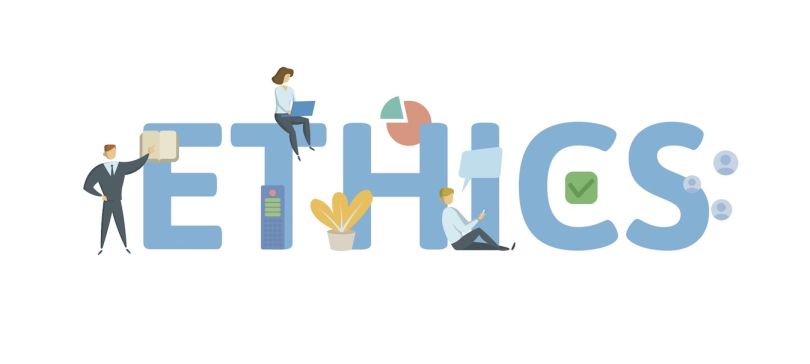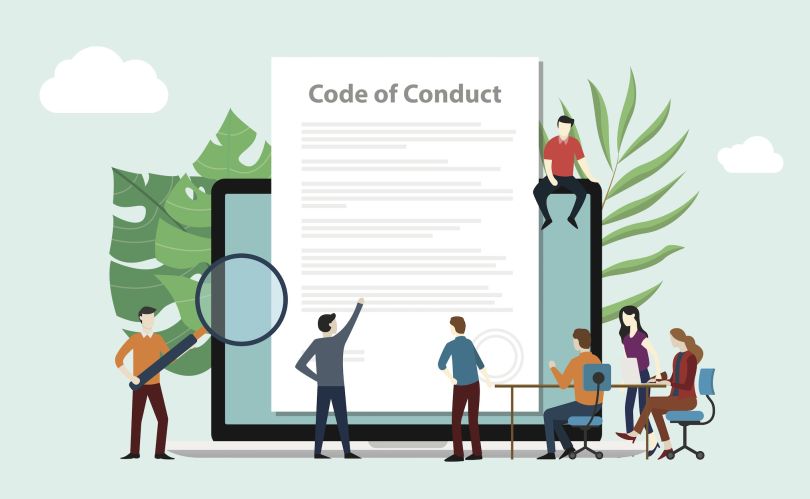Will Griffin wants companies to avoid making the mistakes that leave them asking for forgiveness.
As chief ethics officer at Hypergiant — an Austin-based artificial intelligence firm — Griffin works daily to ensure companies think before developing products that harm users, damage company reputations or violate the law.
He has developed a framework Hypergiant designers, developers, product managers and more use to weigh the ethical implications of their product decisions. Griffin spends his days making sure the framework is used correctly inside the company, and promoting its parameters across the broader tech community.
“Most of the people working in tech or deploying AI, they’re not Ph.D.s in philosophy.”
“Most of the people working in tech or deploying AI, they’re not Ph.D.s in philosophy. They’re engineers, designers, they come out of disciplines that don’t receive a lot of training in ethics,” Griffin said. “Now that ethics is becoming a crucial part of their jobs, they need to be trained in a way that they’re comfortable with using and acting on it.”
Tech ethicists’ backgrounds and responsibilities vary by company
Tech ethics didn’t start in an ivory academic tower. Rather, the big conversation came about at a developer conference.
In 2016, Microsoft CEO Satya Nadella spoke at a company forum about how he viewed some of the ethical issues in tech, particularly around AI, starting the conversation around ethics in the industry, according to the World Economic Forum. Several companies and organizations, particularly larger ones, have since followed suit and developed their own guidelines for moral operation.
Ethics means something different for every company, Griffin said. Some ethicists report to public relations departments, others outline internal operations and still others guide product development.
For this reason, tech ethicists come from a variety of professional backgrounds. Designers, developers and engineers have all gone on to careers in ethics, Griffin said. But in general, entrepreneurs-turned-ethicists offer an edge because they understand the pressures and pace of developing new ideas, Griffin said, and those coming from compliance have an advantage because they have experience working with many parts of a business and understand existing legal parameters.
“You really have to understand law and you do have to understand policy with ethics because it touches so many different disciplines,” he said.

It all starts with understanding the industry’s biggest challenges
Griffin starts his day by familiarizing himself with what’s going on in the industry. He spends two hours reading about how companies, governments and policymaking bodies have deployed AI, as well as relevant research from the MIT Tech Review, Harvard Business Review and McKinsey & Company. He then applies these findings to how ethical considerations are factored into the business problems of Hypergiant clients.
Griffin vets the ethical strength of each Hypergiant proposal through an internal framework he developed called “Top of Mind Ethics,” which is a heuristic that helps engineers, designers, product managers — anyone involved in the solution process — integrate ethics into their workflow.
The Core Tenets of ‘Top of Mind Ethics’
- Good Will: Was the use case developed with a positive intent?
- Categorical Imperative: If every person in every company in an industry across the world used tech in this way, what would the world look like?
- Law of Humanity: Does the technology benefit people, or does it use people as a means to an end?
Griffin created the framework over a span of about four months, by first surveying operations at Stanford University’s Artificial Intelligence Lab and Harvard University’s Berkman Klein Center for Internet and Society. He then looked to philosopher Immanuel Kant’s theological framework for inspiration. Kant’s framework basically aims to answer the question of whether an action is right or wrong.
“Every organization is creating a statement on ethics in AI, coming out with a list of principles, but operationalizing those values is a bigger challenge for companies,” Griffin said. “We created this heuristic as a way to do it that people would be comfortable with and it would be a way for them to learn and actually use, instead of having a bunch of high-minded principles.”

Multiple stakeholders review the ethics of every product decision
The pervading ethos among many in the Silicon Valley tech scene can be summarized by Facebook’s now-infamous “move fast, break things” mantra. “Top of Mind Ethics” flips this script, Griffin said — the framework starts with developers deciding if they should solve a problem by weighing if the issue is worthy, and if the intent of their proposed solution is good.
Hypergiant developers answer these questions by analyzing the impact of a suggested solution on an entire company or industry, and looking at whether the design of the technology benefits people, or uses them as a means to an end. This approach is known as the “Law of Humanity,” Griffin said.
“You can imagine an environment where so much money is at stake that people can be overwhelmed and justify making decisions without thinking about consequences.”
In the case of a recent client, Griffin said Hypergiant analyzed how to keep the “largest provider of [trains] in the world” running on time every day, without upkeep hiccups.
The team created a predictive maintenance proposal, outlining that the solution satisfied the company’s goodwill tenet, since the goal was to make the trains safer for workers and riders; categorical imperative, since consistent machines are safer and more efficient for everyone; and Law of Humanity because reliability is good for all people.
In addition to looking at how the proposed solution adheres to the “Top of Mind Ethics” framework, developers are also careful to ensure they account for relevant local, national and federal laws. Griffin said the client doesn’t require Hypergiant to look at this — or test solutions for their ethical strength — but that the company ensures it meets these requirements because it makes for a better, more thoughtful, solution.
“They solve the business problem but also make the solution more robust,” Griffin said of Hypergiant’s development process.
After the group identifies a solution, and outlines how it meets legal and ethical requirements, they submit these assertions to Hypergiant’s Red Team — a cross-functional group of about five designers, data scientists, strategists and, occasionally, individuals in research and design — who raise challenges to the proposal, questioning, for example, if the predictive maintenance solution will leave workers out of a job.
“I can’t imagine a world where there aren’t challenges,” Griffin said. “That part is important because it allows us to make the solution more robust.”
The Red Team would not automatically exclude a proposal that left workers in the lurch, but the group would make sure all other alternatives were explored, like humans and robots working together; answer whether job loss is inevitable (and not just to make a profit); offer alternatives to re-skill workers for another job or work to secure them jobs at another firm; or advocate at a policy level for universal basic income.
“The goal is to figure out how we can make it work,” Griffin said.
From there, the proposal is then sent to the ethics review board — which, depending on the project, can consist of a C-suite executive or the owners of the project — which offers the final say on the solution. Proposals found to be ethical are then sent to the customer.
“Our goal is not to create more infrastructure, our goal is to inculcate ethical reasoning across the entire company,” Griffin said.
Griffin’s role in all of this is to manage the process — he helps the case owner formulate their argument in support of the proposed use case, and he helps the Red Team come up with an argument against the solution offered. He then makes sure all the relevant information for how a decision is made is compiled during the adjudication process, and saved in a searchable reference library.
Tracking this process helps projects avoid ethical drift, he said, which occurs when business demands overwhelm ethical reasoning.
“You can imagine an environment where so much money is at stake that people can be overwhelmed and justify making decisions without thinking about consequences,” Griffin said.

Helping other companies keep ethics top of mind
When he’s not looking over projects, Griffin spends his time either traveling to conferences to talk up Hypergiant’s ethical framework, or preparing to evangelize. In early March, he attended a development conference in San Francisco, where he outlined for the first time how to use Hypergiant’s ethical framework to an outside audience.
There, he showcased Hypergiant’s decision workflow tool, which companies can license to implement “Top of Mind Ethics” into their own organizations. The tool can be cloud-based or reside on a company’s internal system, Griffin said.
“The goal is not just to go through thought experiments as it relates to ethics,” Griffin said. “Just being interested in ethics and being good, we could do that at the Salvation Army. Our goal is to use ethics for economic value creation.”




